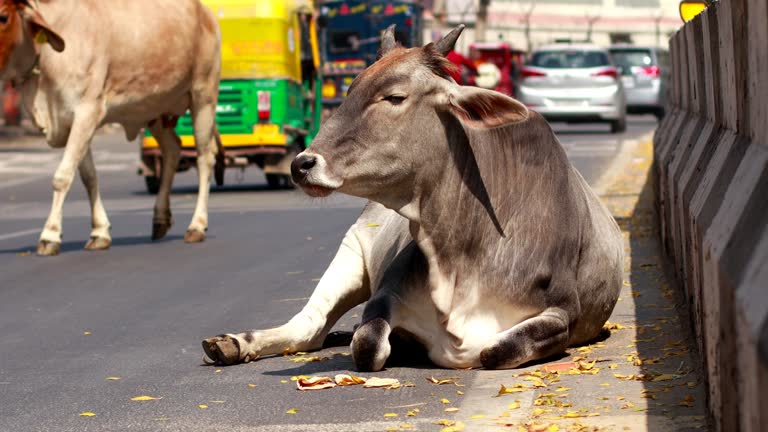Looking at the cow straying inside dustbins and plastic polythene for food, one wonders what the city has done to shelter and safeguard the cows of Delhi. According to the data from the Municipal Corporation of Delhi (MCD) veterinary department, the city administration has not built even a single new cow shelter or Gaushala for strays in over two decades. Municipal officials confirmed on Monday that shelters house 20,485 cows, much above the sanctioned capacity of 19,838. Despite the overcrowded shelters, thousands of stray cattle in the city remain on the streets.
“Initial official Gaushalas were set up in the late 1990s, three in Narela Bhawna and three in Najafgarh. One unit was closed in the initial phase while the Acharya Sushil Munni Gaushala was shut down in 2018 due to mismanagement and a high mortality rate. Despite repeated appeals for more space, no new facilities have been developed,” said a senior officer from the municipal commission.
Shortage of Shelter
The shortage of space was also highlighted in the MCD standing committee meeting on August 20 by Anju Devi, the representative from the Narela zone. According to her, the shelters are refusing to accept new cattle. “Even though shelters are in the Narela zone, they are not taking in more animals. The administration should also seek help for neighbouring states until new facilities are open,” Anju suggested.
Currently, four official shelters remain operational on Delhi’s outskirts, including Darbar Hare Krishna in Surhera, Gosadan in Harewali, and Shri Krishna in Bhawna Sultanpur Dabas. The Ghuman Hera Gaushala in Najafgarh was shut down in 2018 after a spike in bovine deaths.
The MCD data also records that all shelters are running at or beyond their capacity. For instance, the Harewali shelter houses 4,016 cows against its capacity of 3,270, while Sultanpur Dabas has 8,701 cows against its capacity of 7,848. Revla Khanpur has 2,983 against 3,488, while Surhera has 4,785 against 5,232.
According to veterinary department officials, Narela’s own shelter has stopped taking cattle while Najafgarh is being used only for emergency purposes. “New sites must be identified and Acharya Sushil Munni shelter should be reopened. It can hold 3,500 animals across 19 acres. Shelter operators are refusing new entry, citing lack of space,” officials said.
When the MCD veterinary team catches stray cattle to hand over to the shelters approved by the animal husbandry department, shelter operators are paid ₹40 per day, split equally between the Corporation and the Delhi Government. However, operators complain of delayed payments and rising fodder costs. Corporation figures show 13,191 cattle were impounded in 2022 and 2023.
Cattle Problem of Delhi
Once largely part of the rural landscape of Outer Delhi, strays have now become part of the capital city’s landscape as well. They block important roads, feed near garbage collection points, and roam in central districts. Officials also admit this is a problem linked to illegal dairies that never shifted to designated colonies on the outskirts. According to MCD, 135 dairies of Delhi were sealed or shut down in 2020–22, but previous years’ actions have not been sufficient in preventing the cattle overflow. Along with this, the veterinary department also faces an acute manpower shortage.
Delhi faced a similar crisis before in the mid-2000s, when a large-scale cow mortality crisis led to the formation of a committee headed by then-minister Ramakant Goswami. The panel recommended regular audits of Gaushalas, advance funds to maintain fodder stock for a three-month period, oversight mechanisms, and greater public participation in shelter management.
However, municipal department records show the implementation of only a few of these reforms. “These recommendations were strong but remained on paper. Unless structural reforms are taken, the crisis will keep repeating,” said a senior official from the MCD to national media.
Since shelters are getting overcrowded and strays are increasing on the city’s roads, municipal officials warn problems will only escalate unless new operations are established. For the time being, MCD says it is pressing the Delhi Government and the animal husbandry department for various approvals. But until then, or until new Gaushalas come up in the city, Delhi is left juggling between overcrowded shelters and a constant rise in stray cattle.


